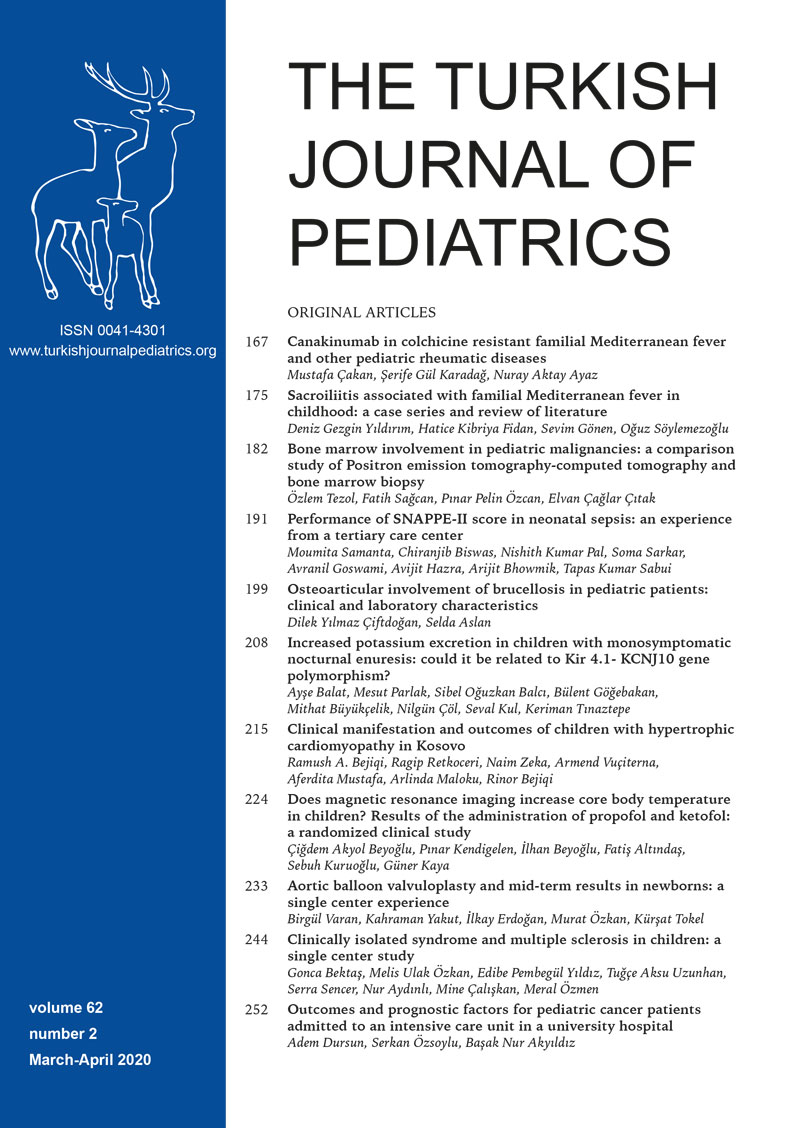Abstract
Background. Kawasaki disease (KD) is an acute, self-limited vasculitis of unknown etiology that occurs predominantly in infants and young children. Encephalitis/encephalopathy is an extremely rare complication of KD.
Case. A previously healthy 8-month-old Japanese boy had a prolonged seizure after febrile illness for one day. On the fourth day, he had bilateral nonexudative conjunctivitis, changes in the extremities, rash and induration at the Bacillus Calmette-Guerin inoculation site. He was diagnosed with incomplete KD and treated with immunoglobulin. On the fifth day, he had cluster seizures. Brain magnetic resonance imaging (MRI) showed restricted diffusion in the left subcortical white matter, which was consistent with acute encephalopathy with biphasic seizures and late reduced diffusion (AESD). He was treated with controlled normothermia, pulseddose methylprednisolone, continuous infusion of midazolam, and edaravone. On the tenth day, he had a recurrent fever and was treated with a second course of immunoglobulin. Subsequently, he had defervescence, and the abnormal signal detected in the MRI disappeared. At the age of 11 months, he had normal growth and development for his age by the Denver Developmental Screening Test.
Conclusion. It is necessary to consider AESD as the differential diagnosis of prolonged seizure in infants with KD. Brain MRI led to early diagnosis and intervention in our patient. The neurological prognosis of our patient was relatively good, but the prognosis of KD with AESD is unknown. To clarify this, further case accumulation is warranted.
Keywords: Kawasaki disease, acute encephalopathy with biphasic seizures and late reduced diffusion, encephalopathy, incomplete
Copyright and license
Copyright © 2020 The Author(s). This is an open access article distributed under the Creative Commons Attribution License (CC BY), which permits unrestricted use, distribution, and reproduction in any medium or format, provided the original work is properly cited.














